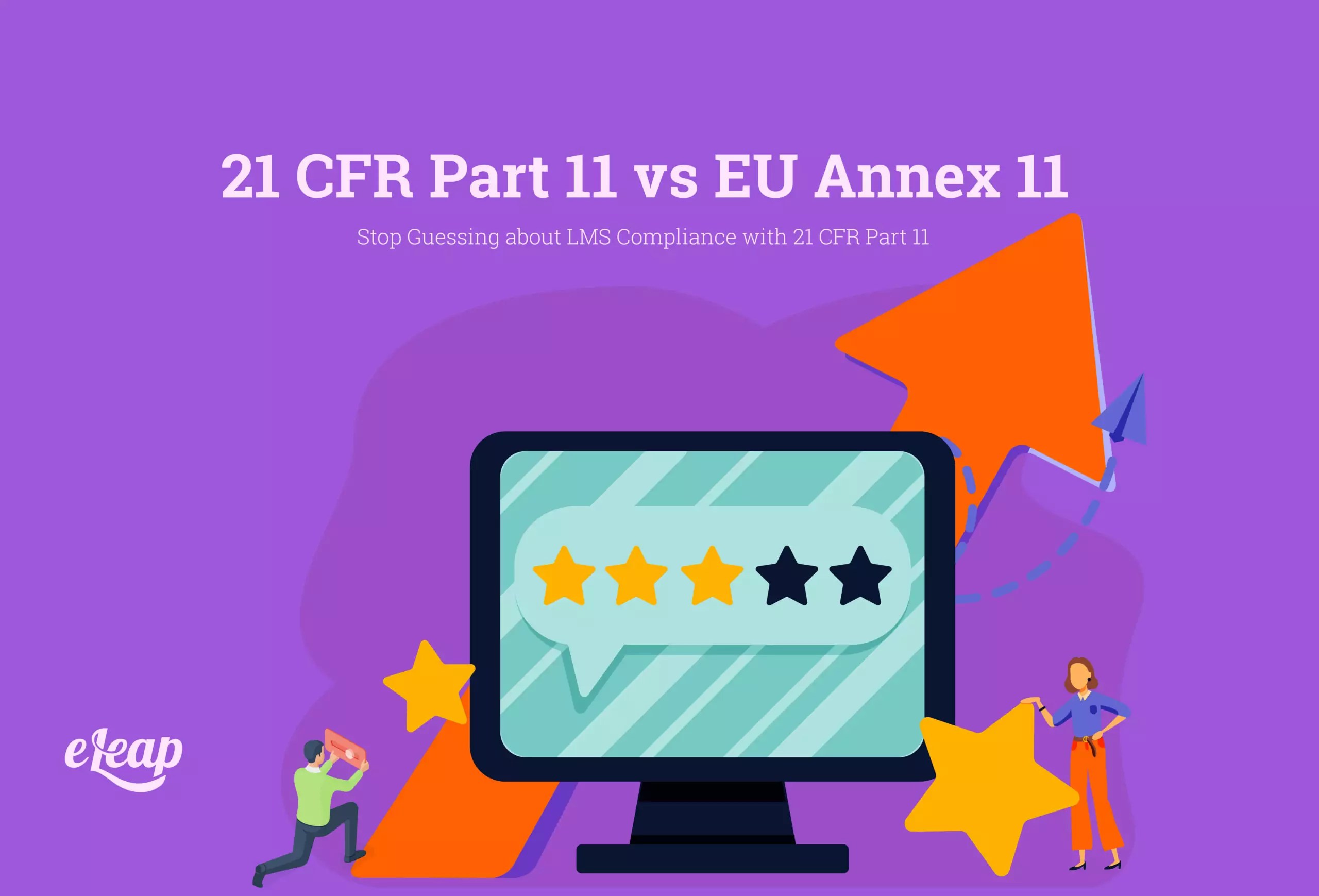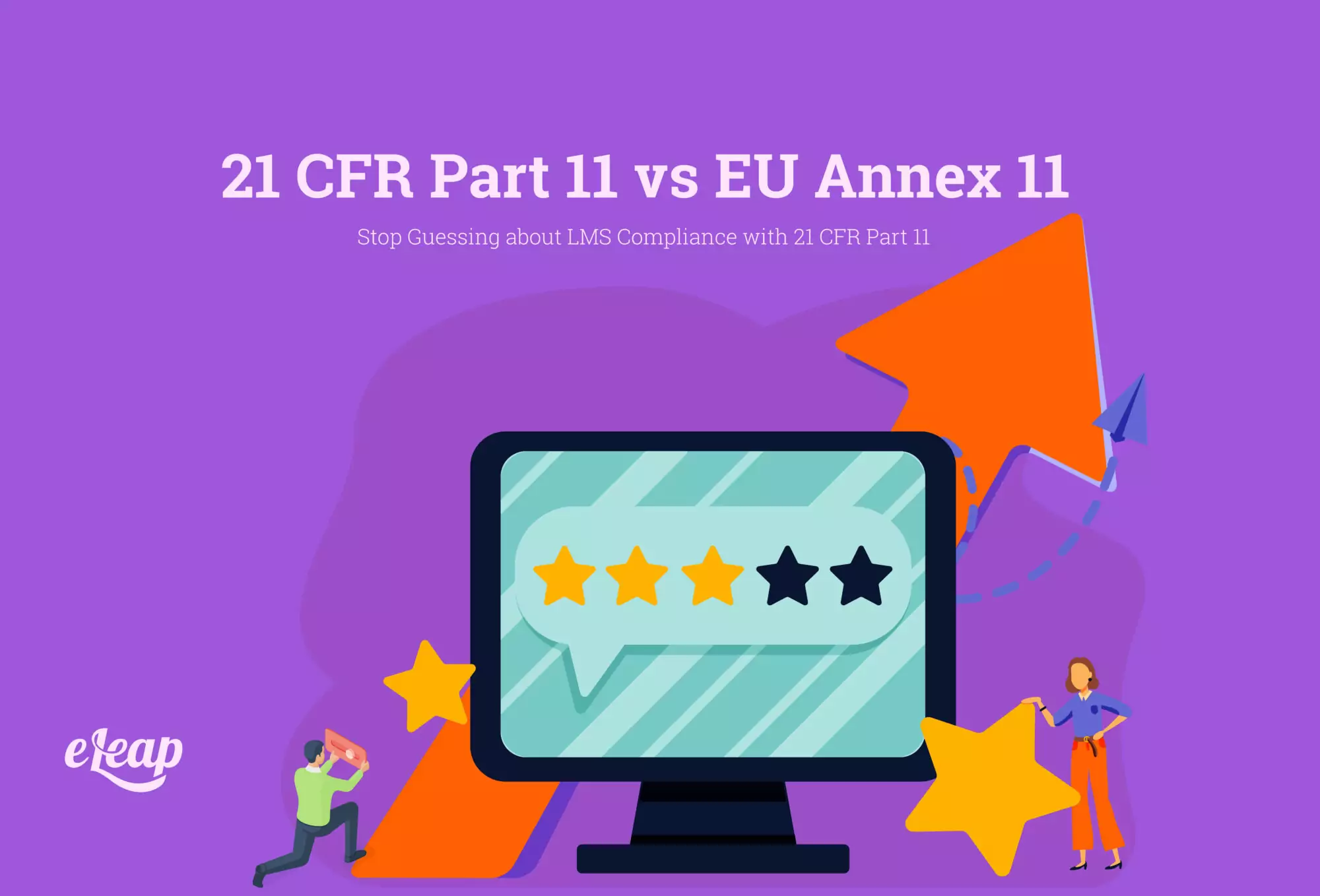21 CFR Part 11 vs EU Annex 11
Know the difference: CFR Part 11 vs EU Annex 11

EU Annex 11 is the EU’s equivalent to Title 21 CFR Part 11, although it has different guidelines and regulatory practices than the latter. This guidance system mandates electronic records and signatures within the pharmaceutical industry and does not apply only to electronic documents. While CFR Part 11 limits its regulation to documents and signatures, the EU Annex 11 includes software, hardware, personal, and risk management. However, Annex 11 does not apply to organizations manufacturing medical devices as of the time of this writing. If you have questions on CFR Part 11 or Annex 11, contact our experts.

Annex 11 speaks to medicinal products and pharmaceuticals, and although medical devices are not included in the language, many life sciences organizations will still attempt to comply with these guidelines in the assumption that they’ll be relevant in the future.
Created in 2011, the full text of this provision covers the following:
- Validation of data
- Accuracy checks
- Data storage
- Printouts
- Audit trails
- Change management
- Configuration management
- Periodic evaluation
- Security
- Electronic signatures
- Batch releases
- Business continuity
- Archiving and records
According to the code, “Where a computerised (SIC) system replaces a manual operation, there should be no resultant decrease in product quality, process control or quality assurance. There should be no increase in the overall risk of the process.”
What Does Annex 11 Mean?
According to the publication, EU Annex 11 is a comprehensive guideline that supplements the full set of GMP rules, known as the EUDRALEX Rules Governing Medicinal Products in the European Union, Volume 4, Good Manufacturing Practice. These rules apply to all veterinary and human medical products sold or manufactured in the EU.
Annex 11 states that even though computerized systems have been introduced, we still need to observe other relevant GMP practices and ensure no decrease in quality or quality assurance. Essentially, it wants to ensure, like Title 21 CFR 11, that electronic records and signatures remain of the utmost quality and can be validated, proven secure, and kept from the risk of a data breach or other threats.
Annex 11 is similar to CFR Part 11 in several ways, including this one. It has its own language and qualifying factors, and manufacturers that work internationally may have to comply with both CFR Part 11 and EU Annex 11. After all, you cannot sell goods in the U.S. that are not compliant with FDA guidelines, and that goes for medical devices and other life sciences resources as well.
Annex 11 requires validation for activities like:
- Production
- Material supply
- Lab testing
- Process controls
- Quality systems
- Clinical trials
- Records and documents
- Product releases and distribution
- Product storage
The most significant difference is that Part 11 is a U.S. regulation mandated under federal laws. Annex 11, on the other hand, is a strongly suggested guideline that is not mandated, but it does provide a more practical approach.
This regulation also sets higher expectations in three main areas for your business, including:
- Risk management
- Supplier audits
- IT infrastructure qualification
Which Compliance Should I Follow?
As we mentioned, Annex 11 is directed at products and services manufactured and sold in the EU. Title 21 CFR Part 11 is an FDA regulation that applies to any products sold or manufactured in the U.S. or sold by U.S. companies. So, you’ll have to check all of the regulatory compliance standards for your organization before doing business globally to ensure that you meet all of the guidelines set forth.
If you aren’t sure, it may be helpful to enlist the assistance of a professional who understands regulatory compliance and validation and can help you ensure that your computerized systems and electronic records are held to the same high standard as physical records always have been. At eLeaP, we have all the tools to ensure that you have a compliant LMS and other solutions in place to keep your life sciences company operating properly under the laws and regulations.
21 CFR Part 11 vs. EU Annex 11: The Breakdown
To make it even simpler, here’s a side-by-side high-level comparison table of CFR Part 11 and EU Annex 11:
| Annex 11 | CFR Part 11 | |
| Scope | All computerized systems as part of Good Manufacturing Practice; applications should be validated and IT infrastructure qualified. | Electronic records and signatures that are used for any FDA-regulated activities by life sciences and other organizations. |
| Focus | Quality management of computerized systems from a risk-based standpoint. | The use of electronic signatures and records in open or closed computer systems. |
| Objective | The use of a computerized system should result in the same quality assurance and product quality as manual systems with no risk increase. | The electronic records and signatures captured and stored should be as reliable and trusted as paper documents and wet signatures. |
| Relevance and Validation | Relevant to GMP but referenced in other areas as well. | Relevant to and based on validation according to GMP, GDP, GLP, GCP, and medical devices. |
Annex 11 is suggesting that risk assessment is the beginning of compliance for all computerized systems, while the FDA guideline focuses exclusively on electronic signatures and records within those systems. Essentially, the two together can be a dynamic guideline for proper validation and compliance for medical device and life sciences companies. You can download the “How to Prepare for a 21 CFR Part 11 FDA Inspection” whitepaper.
The FDA guideline applies to all biotech companies, drug manufacturers, medical device companies, and other life sciences organizations. Annex 11 has similar audiences but with different intentions.
Ask for Help
Although the various compliance guidelines have their own intentions, they work together in our ever-changing global landscape to ensure that all organizations can stay compliant and keep their electronic records secure, no matter where or how they do business. Whether it’s via Annex 11, CFR Part 11, or any other regulatory standard, you need to ensure that your electronic records and signatures are in compliance at all times. Get in touch today for assistance with validation or to find out how eLeaP has built a compliant LMS solution for your life sciences organization.